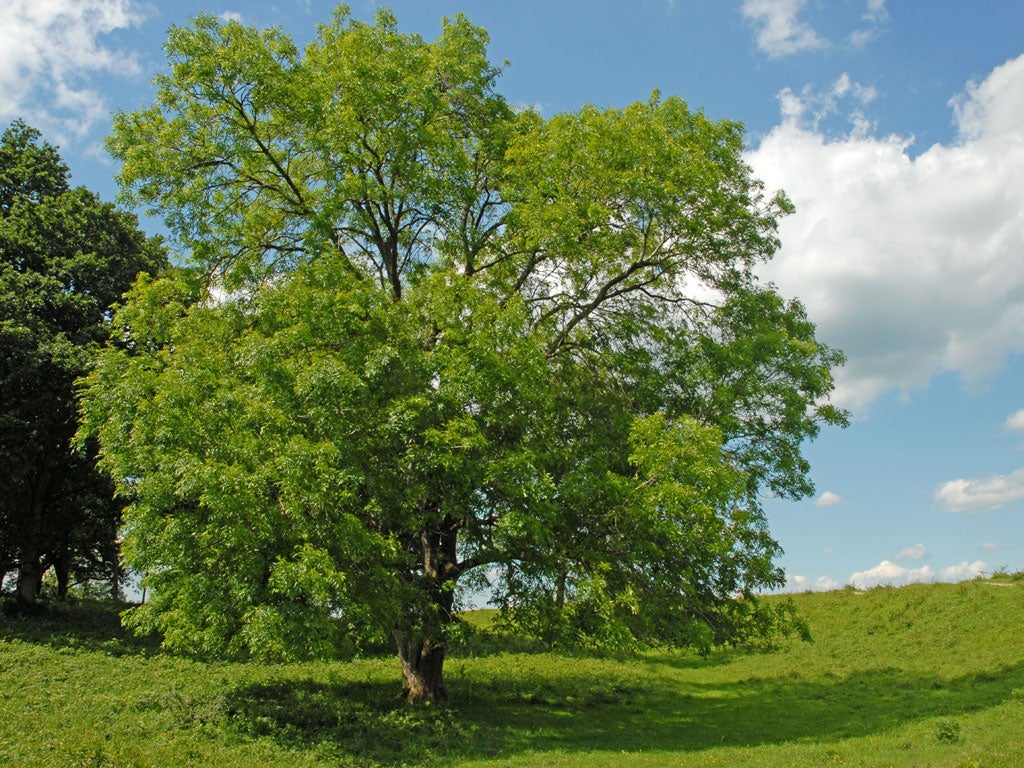Deadly ash tree 'dieback' disease now found in 115 sites and a further six counties

Your support helps us to tell the story
From reproductive rights to climate change to Big Tech, The Independent is on the ground when the story is developing. Whether it's investigating the financials of Elon Musk's pro-Trump PAC or producing our latest documentary, 'The A Word', which shines a light on the American women fighting for reproductive rights, we know how important it is to parse out the facts from the messaging.
At such a critical moment in US history, we need reporters on the ground. Your donation allows us to keep sending journalists to speak to both sides of the story.
The Independent is trusted by Americans across the entire political spectrum. And unlike many other quality news outlets, we choose not to lock Americans out of our reporting and analysis with paywalls. We believe quality journalism should be available to everyone, paid for by those who can afford it.
Your support makes all the difference.The spread of the deadly fungus threatening all 80m British ash trees cannot be stopped, a leading Government scientist has said, and Britain’s woods and forests will have to undergo major change as a result.
As new figures were issued showing that chalara, or ash dieback disease, had now been found in 115 sites from Northumberland to Sussex, the Chief Scientist at the Department for Environment, Food and Rural Affairs (Defra), Professor Ian Boyd, conceded that the march of the disease across the countryside would be impossible to halt.
“I think it’s true to say that it’s in the wider environment [meaning mature woodland, and not just nurseries], and there’s not much that can be done about stopping that spread in the wider environment,” he said.
Chalara kills ash trees, which cannot be vaccinated against it, and there is no cure. Although he declined to agree that “the ash is finished” in Britain, Professor Boyd said there would be a decline in British ash trees over many years, and the only effective response would be to find and breed strains of ash which were innately fungus-resistant, and which could replace native species.
A major research programme to do this is being considered, under the auspices of the Biotechnology and Biological Sciences Research Council, he said, although he would give no figures of the possible funding involved.
As a result of chalara, Britain would have to change the structure of its forests, he added, “to use well developed silvicultural practice to introduce new species and different forest structures, to replace those ash trees that are in decline.”
Professor Boyd was speaking after a “tree summit” of scientists, conservation and environmental charities and landowners, to discuss the chalara problem, which heard the latest results of the intensive survey carried out by the Forestry Commission, to look for the disease across Britain in the last few days.
This found chalara present in six more counties: Sussex, Berkshire, Bedfordshire, Lincolnshire, Yorkshire. The disease has now been confirmed in 115 sites: 15 nurseries, 39 planting sites and 61 locations in the wider environment (forests and woodlands).
Government scientists are making a clear distinction between the planting sites and nurseries, on the one hand, where the fungus has been found on imported saplings,, and the infected mature woodlands in Norfolk, Suffolk, Essex and Kent, on the other, where the disease has almost certainly been blown in on fungal spores from continental Europe, where it is widespread.
It is from the mature woodlands that further spread on wind-borne spores can be expected, perhaps at a rate of 20 to 30 kilometres a year. No evidence of spread from the nurseries and planting sites has yet been found, Professor Boyd said, and he added that the infection in the woodlands in eastern Britain had perhaps been there for two years.
This implies that even if an import ban had been brought in as soon as the disease was discovered on imported saplings last February, it would still have been too late to stop chalara entering Britain.
On Friday the Government will publish an action plan with initial ideas about addressing the issue. It is unlikely that this will involve large-scale sprayings of fungicide or removal of mature trees from woodlands, as officials were urged at the tree summit “not to make the solution more damaging than the problem.”
Join our commenting forum
Join thought-provoking conversations, follow other Independent readers and see their replies
Comments